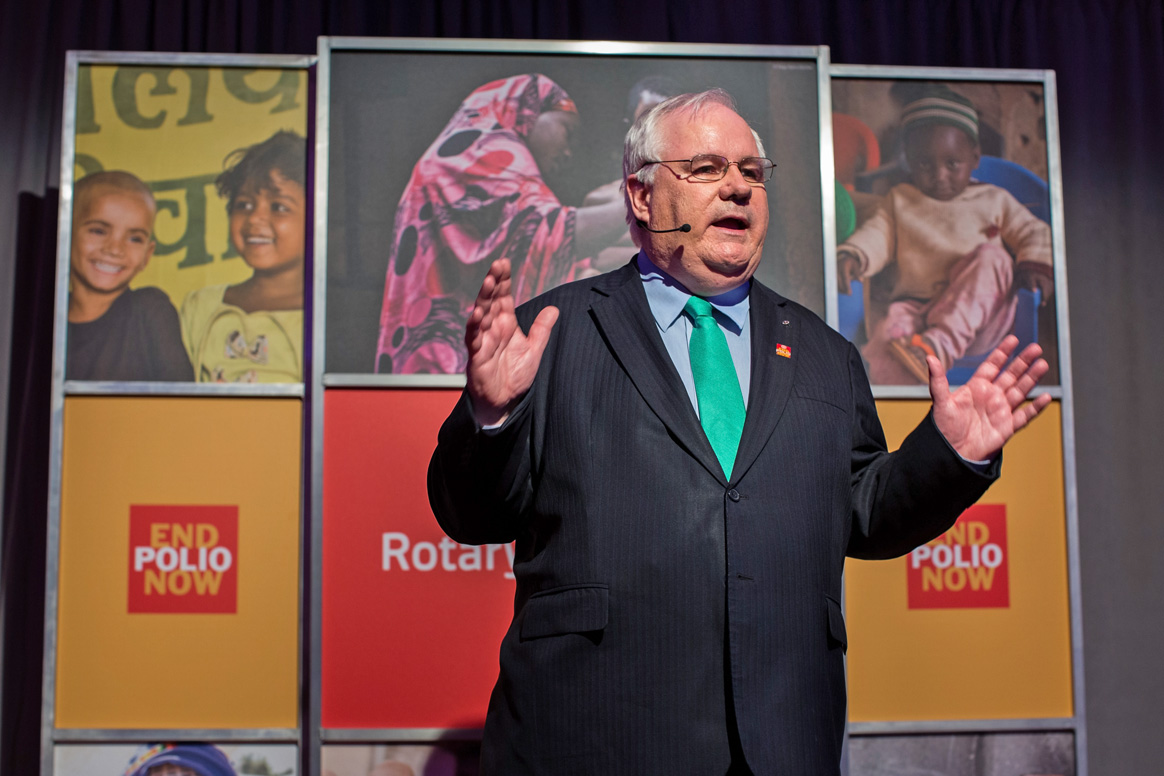
17 December 2012 – Last week, Chad passed six months without a single case of wild poliovirus (WPV). But while this would normally be cause for cheer, there are signs – including the presence of circulating vaccine-derived polioviruses – that children are continuing to miss out on the vaccine.
Much has been written lately about the outbreaks of circulating vaccine-derived polioviruses (cVDPVs) currently affecting Chad, Nigeria, the Somalia/Kenya border and Pakistan, and their implications for the global polio eradication effort. But what exactly is a circulating VDPV? How do they occur? And how can they be prevented?
Eventually use of OPV must stop
A circulating VDPV is an extremely rare strain of polio genetically changed from its original, weakened strain contained in oral polio vaccine (OPV). Read More
Circulating VDPVs must be responded to in the same manner as WPV outbreaks. But once wild polioviruses have been successfully eradicated, OPV must be phased out, as the public health benefits of OPV will no longer outweigh the very small risk of its continued use.
Trivalent oral polio vaccine (tOPV) has long been the vaccine of choice for routine immunization in many parts of the world – it was the vaccine that eradicated wild poliovirus type 2, after all. But while wild type 2 is gone, 90% of circulating vaccine-derived poliovirus cases are of type 2.
The bivalent oral polio vaccine (bOPV) – which does not contain type 2 – is more effective against the two remaining wild poliovirus types. So the world’s guiding body for vaccination policy, the SAGE or Strategic Advisory Group of Experts on immunization has called for a globally synchronized withdrawal of type 2-containing OPV – necessitating a switch from tOPV to bOPV in routine immunization programs. In its landmark decision, the SAGE also recommended that all countries introduce at least a single dose of inactivated polio vaccine to mitigate the risks associated with this switch. This switch is an integral part of the new Polio Eradication and Endgame Strategy currently under development.
How poliovirus behaves
To understand how cVDPVs occur, one should look first at how a wild poliovirus (WPV) behaves.
When a child is infected by a WPV, the virus replicates in the child’s intestine, and then enters the bloodstream through cells lining the intestine, where it can spread to the spinal cord and cause paralysis. The virus is also excreted during this period, spreading to other children in the community, particularly in areas with poor sanitation. If a sufficient number of children are fully immunized against polio, this WPV is unable to find susceptible children to infect, and dies out.
Immunization with OPV occurs in much the same manner. When a child is immunized with OPV, the weakened vaccine-virus also replicates in the intestine (developing immunity by building up antibodies in the intestine) before entering the child’s bloodstream through cells lining the intestine (further developing immunity by building up antibodies in the blood stream). Like WPVs, the vaccine-virus is also excreted during this period. Importantly, as it is excreted, this vaccine-virus is no longer the same as the vaccine-virus originally contained in the OPV dose, as it genetically alters from its original form as it replicates. This vaccine-virus can spread in the immediate community – this is beneficial, as this way it ‘passively’ immunizes other children. Once it no longer finds unimmunized children, this vaccine-virus rapidly dies out.
Circulating VDPVs: Causing cases in areas where populations are under-immunized
On very rare occasions, if a population is seriously under-immunized, an excreted vaccine-virus can find susceptible children and begin to circulate beyond the immediate household into the broader community, for an extended period of time. The longer it is allowed to survive this way, the more genetic changes it undergoes as it replicates, and eventually it can revert to the point that it can cause paralysis. Circulating VDPVs are viruses that have gone through this process.
This takes a long time. Generally, the strain will have been allowed to circulate in an un- or under-immunized population for a period of at least 12 months. Circulating VDPVs occur when routine or supplementary immunization activities (SIAs) are poorly conducted and a population is left susceptible to poliovirus, whether from VDPVs or WPVs. Hence, the problem is not with the vaccine itself, but with low vaccination coverage.
If a population is fully immunized, they will be protected against both VDPVs and WPVs.
Circulating VDPV events are extremely rare. Over the past 10 years, more than 10 billion doses of OPV have been administered to more than 2.5 billion children, preventing more than 650,000 polio cases every single year. In that same period, only 21 cVDPV episodes are known to have occurred, resulting in 622 cases.



